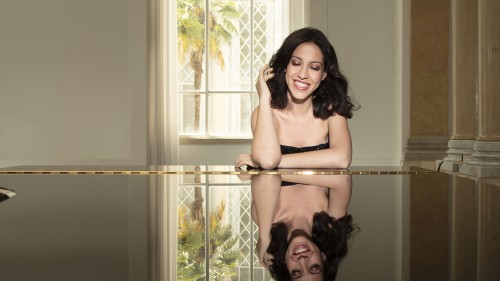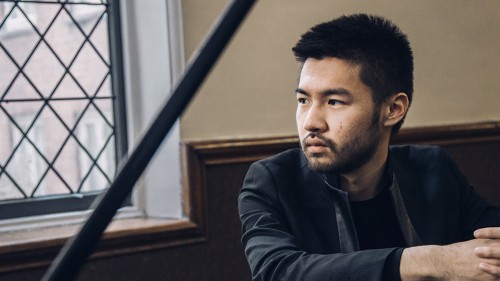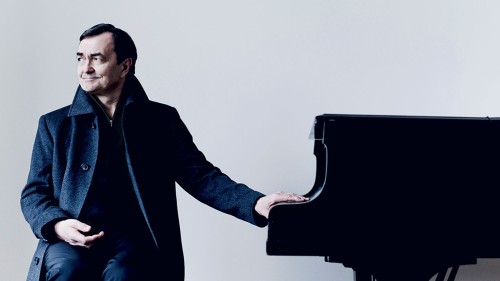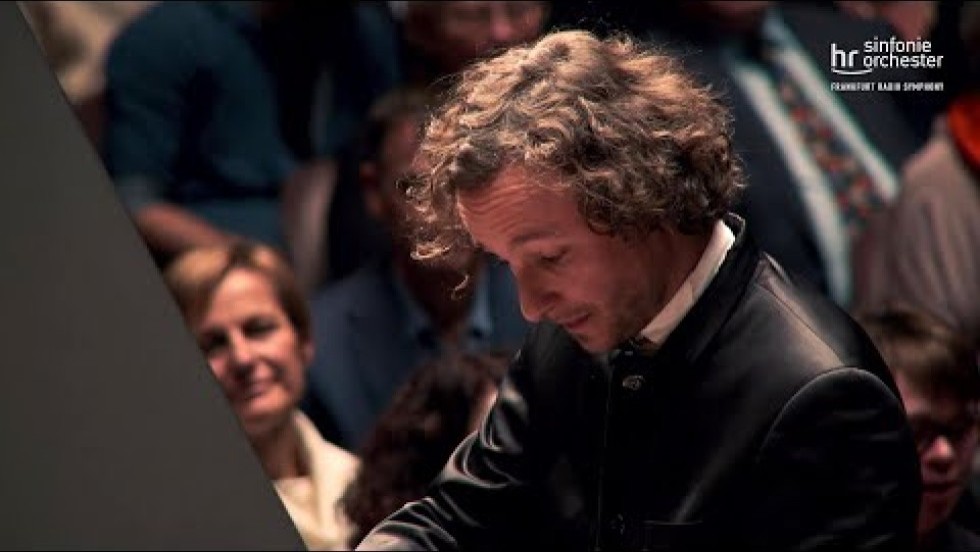
Martin Helmchen, piano
Cookie Notice
This site uses cookies to measure our traffic and improve your experience. By clicking "OK" you consent to our use of cookies.
German pianist Martin Helmchen’s “creamy tone” and “crystalline beauty” (Boston Globe) have made him known as one of the greatest pianists of his generation. As part of the Debut Series, Helmchen brings a program of Bach to Boston audiences.
Helmchen has made sensational debuts with orchestras around the world to wide acclaim, and he is a regular presence at the Boston Symphony Orchestra, most recently in 2021. In recent seasons, he has made notable appearances with the New York Philharmonic, London Philharmonic, and many more.
In this intimate recital, prepare to see an enthusiastic and energetic performance with a classic, unpretentious approach. The Washington Post describes his “stand[-]out” recital, saying “[what] made the afternoon memorable... was the distinctive poetic imagination that he brought to virtually everything he played.”
This performance also has a streaming option December 8- December 14.
Program Details
NOTE: Program Updated 11/28
.Many composers have written keyboard compositions intended, at least in part, as teaching pieces—works employed in the musical education of their pupils. But no composer has written so many works of this kind that are also magnificent examples of the art of the keyboard as J.S. Bach. Much of his harpsichord music was intended for the family circle—which means that it was also “educational” music, since his second wife, Anna Magdalena, and his many children studied with him, and many of his outside pupils lived for a time as members of the family.
Of the three major sets of Bach keyboard suites, each containing six works, the set known as the Partitas (BWV 825-830) have traditionally been thought to date from the composer’s years at Cöthen (1717-1722), and to have been preceded by the so-called “English suites” (BWV 806-811), which took shape at Weimar as early as 1715, and followed by the “French suites” (BWV 812-817), the first five of which he composed for Anna Magdalena in 1722.
But it seems more likely that Bach wrote the Partitas especially for his first publication. He engraved and published them himself (and by issuing them one at a time, he could minimize his risk while spreading out the cost of production; when it was clear that the works were welcomed by musicians, Bach brought them out as a complete set of six, his “Opus 1,” in 1731, under the generic title Clavier-Übung (“Keyboard Exercise”), a title he later used for three other important volumes of keyboard music.
Bach’s early biographer Forkel noted that the publication “made in its time a great noise in the musical world,” which can hardly be surprising, since keyboard music of such stylistic range, expressive richness, and virtuosic challenge to the performer had surely never been published before. Along with his later keyboard publications, these partitas played the major role in Bach’s posthumous reputation until 1827, when Mendelssohn’s revival of the St. Matthew Passion also drew attention once again to the large body of liturgical vocal music.
The standard keyboard suite of the time consisted of four stylized dances, almost always in the same key and appearing in the same order: allemande, courante (sometimes called by the Italian equivalent, corrente), sarabande, gigue. The allemande, usually in 4/4 time, was a dance of moderate tempo. The next two dances were in some form of triple meter, with the sarabande as a slow and often contemplative movement whose harmonic stress usually fell on the second beat, while the gigue (the name is derived from the English “jig”) offers a lively close, usually in 6/8 or 12/8 time.
But for the six partitas in Clavier-Übung I, four of which are performed today, Bach expanded the suite through the addition of “other gallantries,” as he put it on the title page—dances not normally part of the suite, and he opened each work with a substantial introductory movement—all of different types—so as to provide an individual character to each partita.
The partitas represent Bach’s most “modern” view of the keyboard suite, possibly in part through a familiarity with the keyboard works of his near-contemporary Rameau, because they offer freer treatment of the basic dance forms that they contain, and they make greater use of galant elements, the fashionable tone of the new musical style that was soon to make much of his own music seem dated and old-fashioned to many.
© Steve Ledbetter
.Many composers have written keyboard compositions intended, at least in part, as teaching pieces—works employed in the musical education of their pupils. But no composer has written so many works of this kind that are also magnificent examples of the art of the keyboard as J.S. Bach. Much of his harpsichord music was intended for the family circle—which means that it was also “educational” music, since his second wife, Anna Magdalena, and his many children studied with him, and many of his outside pupils lived for a time as members of the family.
Of the three major sets of Bach keyboard suites, each containing six works, the set known as the Partitas (BWV 825-830) have traditionally been thought to date from the composer’s years at Cöthen (1717-1722), and to have been preceded by the so-called “English suites” (BWV 806-811), which took shape at Weimar as early as 1715, and followed by the “French suites” (BWV 812-817), the first five of which he composed for Anna Magdalena in 1722.
But it seems more likely that Bach wrote the Partitas especially for his first publication. He engraved and published them himself (and by issuing them one at a time, he could minimize his risk while spreading out the cost of production; when it was clear that the works were welcomed by musicians, Bach brought them out as a complete set of six, his “Opus 1,” in 1731, under the generic title Clavier-Übung (“Keyboard Exercise”), a title he later used for three other important volumes of keyboard music.
Bach’s early biographer Forkel noted that the publication “made in its time a great noise in the musical world,” which can hardly be surprising, since keyboard music of such stylistic range, expressive richness, and virtuosic challenge to the performer had surely never been published before. Along with his later keyboard publications, these partitas played the major role in Bach’s posthumous reputation until 1827, when Mendelssohn’s revival of the St. Matthew Passion also drew attention once again to the large body of liturgical vocal music.
The standard keyboard suite of the time consisted of four stylized dances, almost always in the same key and appearing in the same order: allemande, courante (sometimes called by the Italian equivalent, corrente), sarabande, gigue. The allemande, usually in 4/4 time, was a dance of moderate tempo. The next two dances were in some form of triple meter, with the sarabande as a slow and often contemplative movement whose harmonic stress usually fell on the second beat, while the gigue (the name is derived from the English “jig”) offers a lively close, usually in 6/8 or 12/8 time.
But for the six partitas in Clavier-Übung I, four of which are performed today, Bach expanded the suite through the addition of “other gallantries,” as he put it on the title page—dances not normally part of the suite, and he opened each work with a substantial introductory movement—all of different types—so as to provide an individual character to each partita.
The partitas represent Bach’s most “modern” view of the keyboard suite, possibly in part through a familiarity with the keyboard works of his near-contemporary Rameau, because they offer freer treatment of the basic dance forms that they contain, and they make greater use of galant elements, the fashionable tone of the new musical style that was soon to make much of his own music seem dated and old-fashioned to many.
© Steve Ledbetter
Featured Artist
“Under the pianist's beautifully regulated touch, phrases arched and connected with a fluidity that always felt natural in their unfolding ...”
Chicago Tribune
Videos
Pickman Hall Information
The 2022/23 Debut Series is generously sponsored by Harriet & David Griesinger and the Longy School of Music of Bard College.
An Aaron Richmond Recital
This performance is made possible in part by support from Celebrity Series' LIVE PERFORMANCE! Arts for All Innovation Funds.
Related Events


Beatrice Rana, piano

Mao Fujita, piano

Conrad Tao
Poetry and Fairy Tales

Víkingur Ólafsson, piano

Pierre-Laurent Aimard, piano
Stay in touch with Celebrity Series of Boston and get the latest.
Email Updates Sign up for Email Updates

